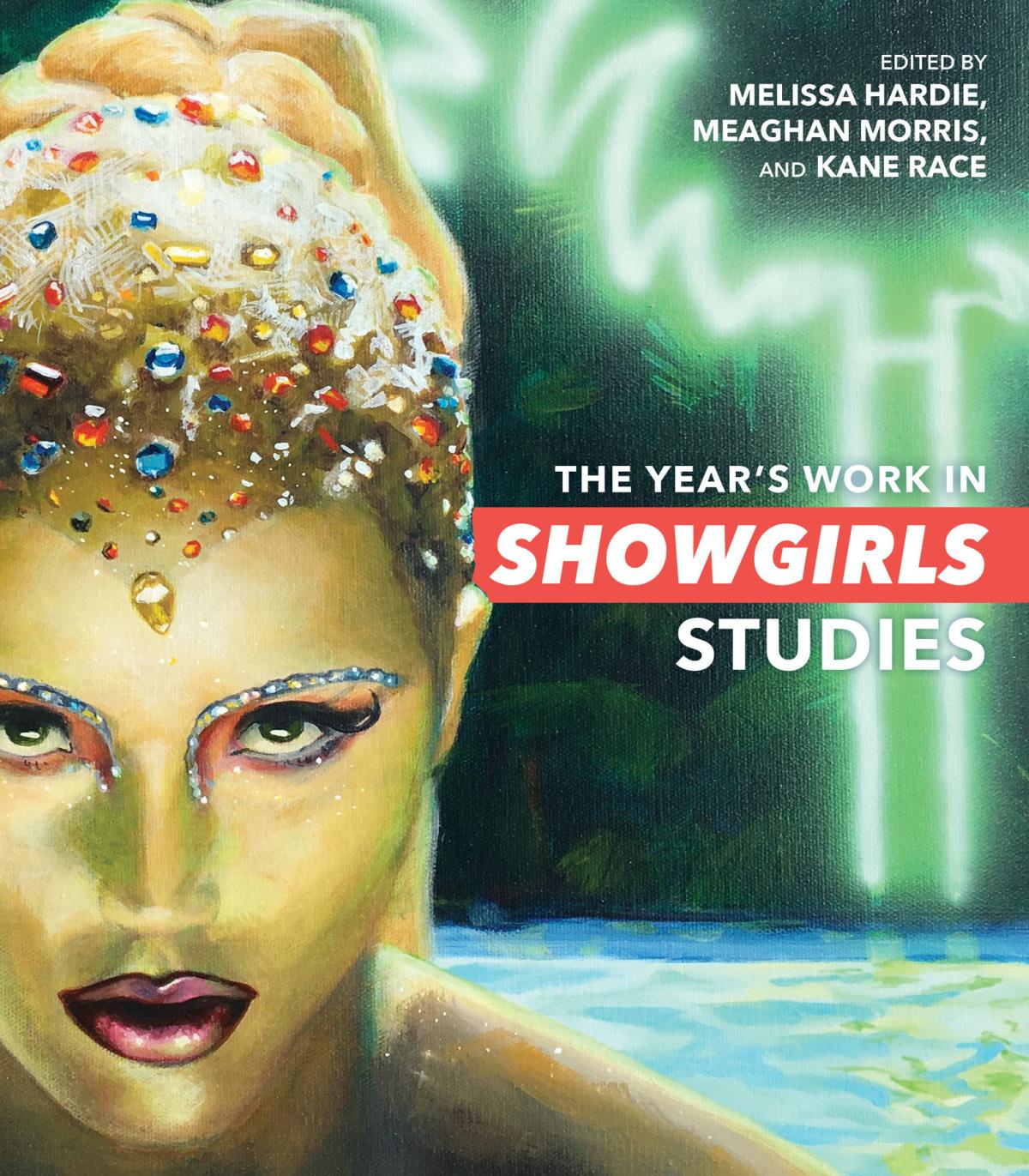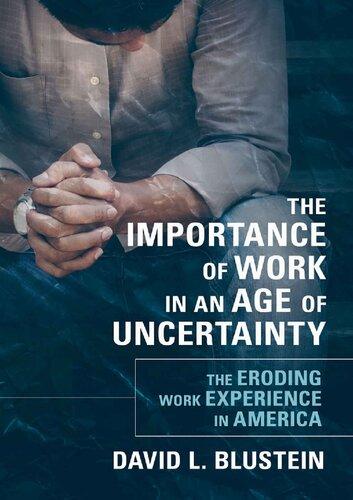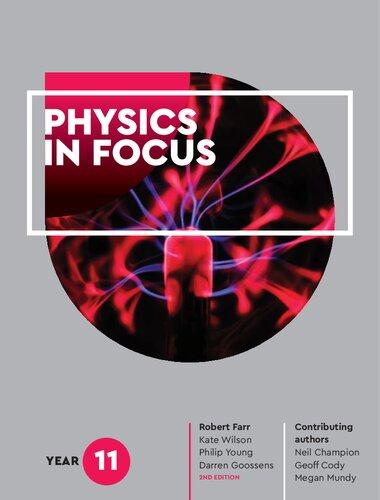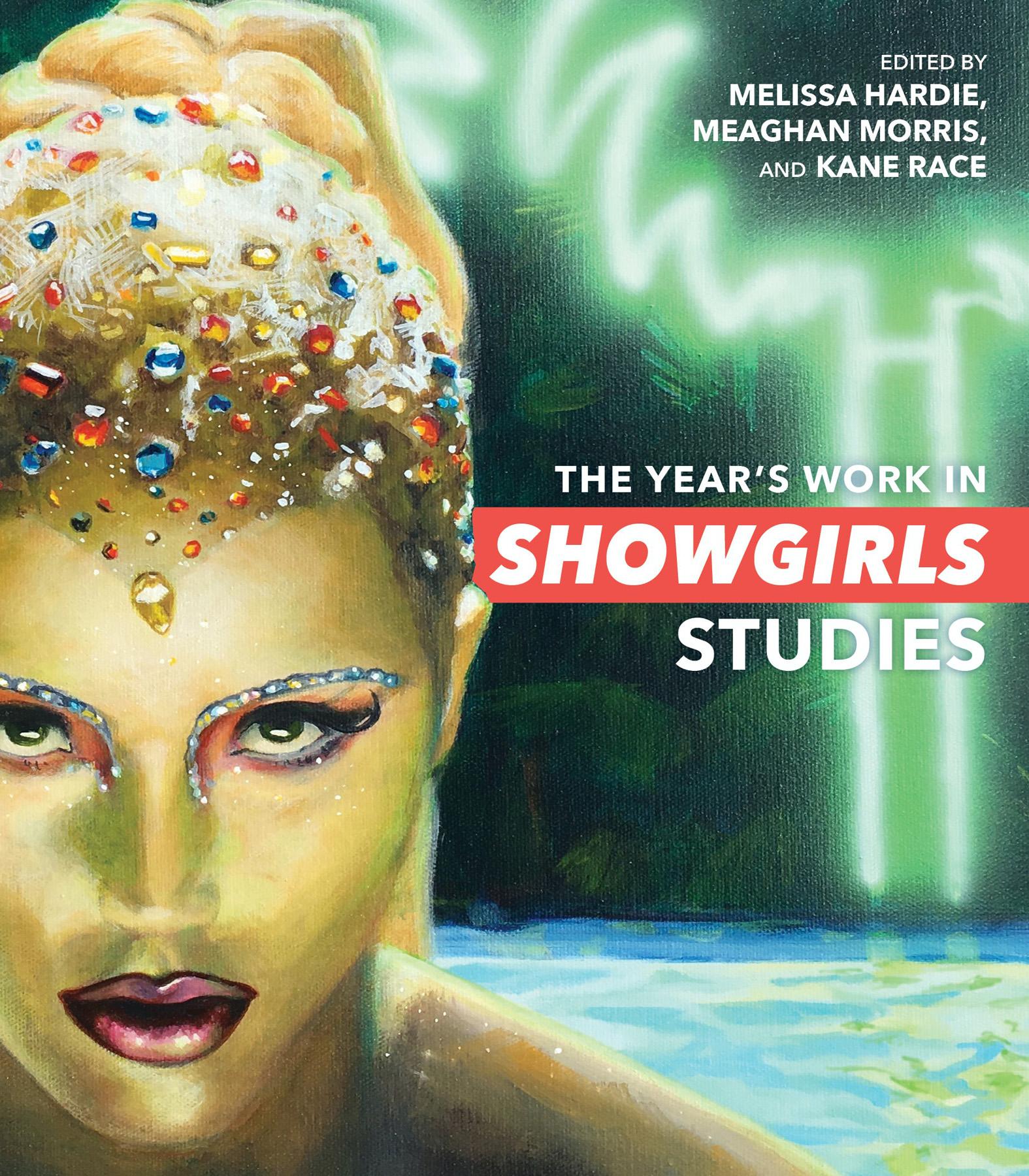INTRODUCTION
MELISSA HARDIE, MEAGHAN MORRIS, AND KANE RACE
The twentieth anniversary of the release and catastrophic box office failure of Paul Verhoeven’s film Showgirls in 2015 prompted celebrations, interviews, reappraisals, and reflections as diverse— and divergent—as the responses elaborated over the preceding two decades. Proliferating online with a galvanizing force not available to fan communities in 1995, when Showgirls recouped less than half of its $45 million budget and scored a record number of Razzie nominations for “worst of the year” awards, the flow of passionately thoughtful public engagement with this much-derided film did not subside with the anniversary year. In 2017, for example, the Film Society of Lincoln Center for the Performing Arts in New York hosted a screening and a discussion with Verhoeven and actor Gina Gershon; Adam Nayman’s short monograph It Doesn’t Suck: Showgirls, first published in 2014, had a special new edition in 2018; and an archive of critical essays together with Showgirls-related clips and interviews has expanded online.1 Then, in 2019, Jeffrey McHale released You Don’t Nomi, a feature-length documentary about the reception and significance of Showgirls today.2
The form of this reputational controversy is not unique in film history. In the 1950s, Douglas Sirk’s sumptuous and torrid Hollywood melodramas were widely dismissed as soapy trash. A general consensus around their brilliance formed only after some key interventions, led in the first instance by Jean-Luc Godard and Rainer Werner Fassbinder, whose essays from 1959 and 1971 respectively were translated into English around the same time as Sirk on Sirk: Interviews with Jon Halliday was published by the
British Film Institute, while Halliday coedited Douglas Sirk with Laura Mulvey for the Edinburgh Film Festival.3 Perhaps no European auteur since Sirk, however, has been more misrecognized and rehabilitated than Verhoeven, whose 1990s Hollywood films Basic Instinct (1992), Showgirls (1995), and Starship Troopers (1997) were almost parodically misread and consigned to the trash heap.4 The impulse to “rescue” Showgirls, Verhoeven’s most infamous work, from the ignominy of dismissal has followed two tracks, both neatly reproduced in You Don’t Nomi. One track rehabilitates Showgirls by asserting the vision of an auteur, tracing its debt to and interaction with Verhoeven’s pre-Hollywood oeuvre and finding complexity in his adaptation of genre conventions within that auteurist vision. This is the Sirkian mode of revision. The other track prosecutes an argument about the varieties of encounter the film elicits: camp and cult consumers whose wit and close-reading verve demonstrate the depths of what can be known about the film. This track of rehabilitation urges revival rather than revision: not inclusion in a canon but seclusion as a unique instance whose various parts make an inimitable whole.
It’s not an accident that scenes of vomiting from a series of Verhoeven films are spliced together in You Don’t Nomi to make these points. A montage of vomiting, typically into a toilet bowl, metaphorizes elements of Showgirls’ narrative that McHale’s film deftly goes on to narrate: the intrusion of an unpleasant phenomenon or experience into the everyday, the return of the unexpected, and a revisiting of earlier pleasures in a distinctly unwelcome form. It also captures the critical disgust of many early reviewers of Showgirls as viscerally as they often expressed it at the time, but then it negotiates this disgust by making its very representation, in its repetitions, a sign of an auteurist project. Disgust is often aligned with cult and camp spectatorship and with the witting deployment of tropes of off-center consumption in camp and cult cinema.5 Led by Nomi’s vomit scene early in Showgirls, this physical embodiment of disgust or fear is aligned with other ways in which Nomi’s body is laden with meaning.
David Schmader, a promoter of camp reception events, comments in You Don’t Nomi that on first viewing Showgirls he was struck by “Nomi having bizarre responses to people who are just trying to give her a hand,” a comment illustrated by scenes of Nomi responding aggressively to either physical or verbal approaches from strangers or, in a couple of cases, her boss. Schmader’s comment feels awkward both in the context of the film’s diegesis, which abundantly demonstrates why Nomi fears for her own safety, and in the context of watching the film today, post #MeToo. It strains credulity on any watching of the film to understand these strangers as merely “giving a hand,” as the gentle Good Samaritans they sometimes purport to be. And that makes it all the more surprising that Schmader uses Nomi’s physical domination in these scenes as an index of the bizarre rather than as an assertion of her bodily strength and autonomy. But it reminds us that a certain strain of “cult” reading reproduces the reductive logic by which Showgirls (and Elizabeth Berkley’s performance as Nomi) was minimized as a feminist icon and fable when the film was released.
For students of fan cultural phenomena, however, a different dimension for thought is opened up by perhaps the most poignant of the 2015 anniversary celebrations, the Cinespia screening of Showgirls in the Hollywood Forever Cemetery, Los Angeles, on June 28, with Elizabeth Berkley present for her first viewing in twenty years of the film that derailed her career. Accessible endlessly for now on YouTube, the love exchanged between the four thousand fans who turned up for the screening and Berkley as she blurred into Nomi onstage manifests itself with an intensity echoing Berkley’s performance in the film itself.6 In thanking those fans for keeping faith with the film over the years and giving her the “sweet” moment she expected but was painfully denied in 1995, Berkley bears witness not only to the capacity of fan formations over time to affect critical judgment but to the power of shared popular cultural pleasures, passions, and sensibilities to transcend a myriad of personal traumas in communal moments of joy.
This volume, too, had its genesis in the anniversary year, with a one-day symposium at the University of Sydney organized by Melissa Hardie in September 2015, precisely with the communal aim of sharing intellectual joy. Small-scale and informal, the “Showgirls 1995–2015” event brought some of our contributors together for the first time and confirmed at the outset our interest not only in the mutable pleasures the film has provided over the years but also in its capacity to activate responses connecting with wider social worlds of sexuality, spectacle, and labor, then and now. This collection leans toward the view of Showgirls as offering the realistic vision of life that Verhoeven’s first auteurist champion, Jacques Rivette, memorably described in 1998 as “surviving in a world populated by assholes.”7 This is not a simple orientation to adopt, however, since the filmmaking process itself folded into the “real” of that vision by putting intimate survival pressure on some of the performers. If all “backstage” stories reflect in some way on the cultural industries enabling their creation, Showgirls in 1995 was embedded in a gendered production economy of intense exploitation, with novice female stars Berkley, Gershon, and Gina Ravera playing roles devised by the then Hollywood alpha male team of Verhoeven and writer Joe Eszterhas, flush with the box office success of Basic Instinct and testing the power of the NC-17 rating to put “in-your-face sexuality, copious nudity and over-the-top melodrama” into a mainstream cinema release.8 The subsequent critical trashing of Berkley’s acting is well known, but Gina Ravera has only recently described the “ordeal” of filming the gang rape scene in her role as Nomi’s friend, Molly Abrams. Unprepared for what it would it be like (“you’ve got two men holding you down; my wrists were bruised, and my body was just covered in bruises after it because of what was asked for the camera”), she was traumatized physically as well as emotionally by the “exuberance” of Verhoeven’s pursuit of realism: “The [punch] you see in the film made contact. My jaw was not right for years.”9
In spite of this, for Ravera the experience of making Showgirls was “mixed; there’s some good stuff,” and she credits Verhoeven with understanding that she was playing the Hollywood stereotype
of “Black best friend” and giving her freedom to develop the role. In this collection, we emphasize the labor and the perspectives of performers, whose “ways of knowing” (as Anna Breckon puts it in her chapter) have been occluded by the prominence in much Showgirls appreciation of the figure of the camp spectator. Accordingly, the problematic “realism” of Showgirls is explored here not only in critical essays but through documentary, ethnographic, and archival approaches to those “mixed” experiences that inform and continue to relay the significance of the film to fans.
In particular, the “Conversations” section provides a thick documentary context of three dialogues dealing with life experiences and ideas that may enrich our understanding of the serious social import of Showgirls. This section situates the showgirl historically and socially in a series of skilled professions and takes up issues of race as well as gender and sexuality that were not always well addressed in the earlier reception life of the film. In the first of these conversations, Jane Park and Shawna Tang interview Lynne HuttonWilliams about Lynne’s life as a trapeze artist “accidentally” turned Las Vegas showgirl some decades before the time in which the film is set, situating that performance culture in relation to the circus world familiar to Lynne and tracing her trajectory through to adventures in British and Australian feminist institution building in the 1970s. This is followed by a chapter by Zahra Stardust drawing on her use of autoethnography among strippers, pole dancers, burlesque artists, queer performers, and sex workers in Sydney today to document the literature, arts, and storytelling produced by strippers themselves as they organize and advocate from within the industry. The third conversation piece takes the form of a dialogue on race, gender, aesthetics, and the moment of Showgirls in US social history and popular culture between Meaghan Morris, speaking from an “outside” as an Australian film critic, and the American cinema scholar Kara Keeling, whose book Queer Times, Black Futures provides concepts that enable their cross-cultural dialogue.10
These conversations are complemented by an archival section that serves to complicate our sense of the history of Showgirls’ reception. We introduce this section with Melissa Jane Hardie’s essay “Loose Slots” from 1996.11 The essay was originally published in an Australian small press journal, XText, which was devoted to theoretically and politically informed cultural criticism across academic and institutional boundaries (the “X” or “cross” of the journal’s name). We assume from experience that the popularity of Showgirls among feminist academics in Australia was not exceptional, although it is rarely represented in traditional histories of the film’s reception. Hardie presented her essay as a paper at a feminist conference, BOLD, at the Australian National University in Canberra. Convened at the Humanities Research Centre by Elizabeth A. Wilson and Helen Keane in July 1996, under the auspices of the Australian National University’s Women’s Studies and Philosophy programs, BOLD proposed that compelling feminist cultural analysis arose when diverse disciplinary practices were brought together (coeditor Meaghan Morris also presented on martial arts studies at BOLD). “Loose Slots” here represents tangible evidence of a feminist, antihomophobic, theoretically informed fandom for the film from its release.
A critical moment in the history of Showgirls’ reappraisal was the 2003 publication of a set of short responses to Showgirls in Film Quarterly, which we reprint. Rather than argue a simple revision of the film as a lost classic, the round table identified evaluation itself as a critical vulnerability exposed by the reception of the film. Across this group of responses, the film complicates popular and academic versions of film criticism because of its capacity to complicate or blur distinctions vested in taste culture. For example, Akira Mizuta Lippit’s contribution (pp. 349–353) dissects the film through an evaluative apparatus supplied by Leonard Maltin’s Movie & Video Guide 2002. Before IMDb, Rotten Tomatoes, and other online resources made evaluative descriptions of films easily available, Maltin’s guides were exercises in epigrammatic description and assessment of value. Lippit’s intricate deconstruction of the apparatus of evaluation—star
ratings and Maltin’s version of the “thumbs down,” the BOMB rating —demonstrates how all varieties of judgment are encapsulated in this system and its application to Showgirls. Lippit’s hypothesis that Showgirls concatenates pornography and melodrama as “pornodrama” signals some of the work the film does to play with genre; he describes these generic medleys as “immersions” of styles that never settle into a blend as such but that sit together in a state of suspense.
Reflecting on one such style, a mode of satire (“the blood that we do not see”) that does not signpost itself as such and allows only fleeting glimpses of an underlying moral of redemption, Chon Noriega sketches a complex critique of its racial foundation in the subservient roles of the Black characters and of the crushing by a celebrity production team of the “rank and file actress who did what she was paid to do” (p. 361). In a different approach to evaluation, Jeffrey Sconce’s “I Have Grown Weary of Your Tiresome Cinema” introduces the principle of rewatching as transformative, noting that it takes precisely “four screenings of the film to transform it from one of Hollywood’s most notorious flops to absolute transcendence” (p. 377). This account of sublimity achieved through repetition introduces a common trope in Showgirls critical history: a narrative of conversion, one already centered elsewhere by Adrian Martin in his famous 2000 essay, “The Offended Critic.”12 Appropriately, given Sconce’s emphasis on the critic whose viewing experiences calibrate the film’s value, his piece concludes with a call for a wry version of Barthesian bliss and the liberation of the critic from the dreary role of “cultural custodian” in favor of the pleasure of being smart about film.
These and other essays in the archival Film Quarterly round table offer precedents for the critical chapters of this collection as they identify key historical and formal contexts for understanding the reception of Showgirls and its endurance as an object of fascination, repulsion, and celebration over more than twenty years. These chapters complicate both auteurist traditions whose efforts to revalue the film place the director in complete control of the
meanings that can be made of it and camp and cult reading practices whose pleasures depend on a reassertion of its categorization as bad. Instead, these essays explore the capacity of Showgirls to generate new pleasures and insights into the workings of gender, sexuality, labor, performance, taste, genre, popular culture, mediation, and media ecologies.
In “Getting It Just Right: Elizabeth Berkley’s Ways of Knowing in Showgirls,” Anna Breckon opens the essay section by developing a reoriented epistemology for the film grounded in the figure of the actor and her identification with the ambitions of her character. This alignment gives Berkley’s performance an erotic and expressive agency that defies conventions of taste, objectification, and directorial intention. Next, in “Self-Shattering in Showgirls and Black Swan,” Kane Race investigates how women who dance for a living navigate the demand to deliver authentic performances of heterosexual desire and stay “classy” in cultural institutions where investments in class are used to exploit them. Where the protagonist of Black Swan takes the “suicidal ecstasy” of masochistic desire literally, Nomi plots a different course that mobilizes another more situated sense of self-shattering.13
Kieryn McKay’s “‘Ain’t anyone ever been nice to you?’: Discharging the Guilty Pleasure of Showgirls” tracks the mechanisms by which MGM/United Artists strategically repurposed their box office flop as a camp midnight movie and then as a DVD boxed set for cult home viewing. Repackaging Showgirls for commercial advantage mobilizes a politics of taste that for McKay precludes the film’s sincere appreciation. In “Badness,” Adrian Martin suspends the question of the badness of films in favor of an exploration of the staging of badness in films. His wide-ranging tour of the mechanism of the “show within the show” queries feelings of security in matters of taste and showcases some diverse ways in which the varied tastes of spectators can be represented, reworked, redefined, and reclaimed.
Billy Stevenson’s “Showgirls, Showgirls 2, and the Fate of the Erotic Thriller” situates Showgirls in relation to the changing media
ecologies, historical genres, and visual aesthetics of late millennial screen culture. If Showgirls makes a case for the cinematic spectacle as a category of pleasure, it also allegorizes its own displacement by the postcinematic technologies used to cobble together its unlikely sequel. For Melissa Hardie in “Fifty Shades of Showgirls: Better Living through Mediation,” bringing together Showgirls and a more recent flop, Fifty Shades of Grey, helps to historicize the films’ interest in plots of female rivalry and their embedding of that generic mainstay in scenarios of libidinal complicity and contracted labor. Showgirls orients its ingenue through a representation of her capacity for calculation but more through her “thinkiness,” where intellectual action joins other kinds of activity in her negotiation of genre and medium. Finally, in “The Instability of Evil: Double Trouble and the Working Girl,” Meaghan Morris connects Showgirls to Pitof’s Catwoman (2004) through the twinning of ethically imperfect female characters around the issues of women’s labor in creative industries that structure both films in different ways. Exploring the use these films make of the motifs of the double and the orphan to model practices of self-invention for women outside the bonds of family life, Morris draws on the autobiographies of the singer, actor, and dancer Eartha Kitt (for whom duality was a key to survival in the performance worlds she knew) to propose a queer historiography capable of tracing in temporal depth the diverse experiences and life struggles of women who labor in cultural industries that then claim to “represent” them.
The essays that make up this volume are addressed in diverse ways to the disciplines from which they emerge—film studies, cultural studies, gender and queer theory, and others. They are also consciously engaged with the practices and professional identities that the film investigates and celebrates, finding an amplified account of the “showgirl” as complex professional identity and physical and intellectual praxis assists academic engagement with the film’s dense account of a historic moment in its history. The collection therefore folds into its fandom and appreciation of the film the wisdom afforded by a renewed interest in workplace sexual dynamics, race and ethnic presence, and the insights of
antihomophobic theory alongside the documentation of experiential and historical presence in the showgirl zone. But they all share one thing: they are written from outside the zone of equivocation that has characterized writing on Showgirls in the past. Instead, they perform the kinds of fandom they explore, putting in plain view intellectual, affective, and libidinal investments in this extraordinary film.
MELISSA HARDIE is Associate Professor of English at the University of Sydney. Her recent work appears in Australian Humanities Review, TextualPractice, FilmQuarterly, and Angelaki. Her most recent book chapter (with Amy Villarejo) is on the 1978 Briggs Initiative and the television drama Family, in Television Studies in Queer Times. She is editor of the Oxford University Press series Approaches to the Novel.
MEAGHAN MORRIS is Professor of Gender and Cultural Studies at the University of Sydney. She is author of The Pirate’s Fiancée: Feminism, Reading, Postmodernism; Too Soon Too Late: History in Popular Culture; and Identity Anecdotes: Translation andMedia Culture.
KANE RACE is Professor of Gender and Cultural Studies at the University of Sydney. He is author of Pleasure Consuming Medicine: TheQueer Politics ofDrugs; The Gay Science: Intimate Experiments withthe Problem ofHIV; and (with Gay Hawkins and Emily Potter) Plastic Water: The SocialandMaterialLife of BottledWater.
References
Alter, Ethan. “‘Showgirls’ at 25: Gina Ravera Discusses the Cult Movie’s Most Controversial Scene.” Yahoo!Entertainment, September 23, 2020.
https://www.yahoo.com/entertainment/showgirls-gina-ravera-controversialscene-paul-verhoeven-220338697.html.
Bersani, Leo. “Is the Rectum a Grave?” October 43 (1987): 197–222.
Bonnaud, Frédéric. “The Captive Lover An Interview with Jacques Rivette.”
Translated by Kent Jones. Senses ofCinema 79 (September 2001). First published in French, 1998. http://sensesofcinema.com/2001/jacquesrivette/rivette-2/.
Breckon, Anna. “The Erotic Politics of Disgust: PinkFlamingos as Queer Political Cinema.” Screen 54, no. 4 (2013): 514–33.
Fassbinder, Rainer Werner. “Six Films by Douglas Sirk.” In Douglas Sirk, edited by Laura Mulvey and Jon Halliday, 95–106. Edinburgh: Edinburgh Film Festival, 1972.
Film at Lincoln Center. “‘Showgirls’ Q&A: Paul Verhoeven & Gina Gershon.”
YouTube, March 1, 2017. https://youtu.be/vj7JB Otn3A.
Godard, Jean-Luc. “Tears and Speed.” Translated by Susan Bennett. Screen 12, no. 2 (1971): 95–98. First published in French, 1959.
Hardie, Melissa Jane. “Loose Slots: Figuring the Strip in Showgirls.” XText 1 (1996): 24–35.
Keeling, Kara. Queer Times, BlackFutures. New York: New York University Press, 2019.
Maltin, Leonard. LeonardMaltin’s Movie &Video Guide 2002. New York: Signet, 2002.
Marsh, Calum. “Starship Troopers: One of the Most Misunderstood Movies Ever.” The Atlantic, November 7, 2013. https://www.theatlantic.com/entertainment/archive/2013/11/-em-starshiptroopers-em-one-of-the-most-misunderstood-movies-ever/281236/.
Martin, Adrian. Mysteries ofCinema: Reflections on Film Theory, History and Culture 1982–2016. Perth: University of Western Australia Publishing, 2020.
. “The Offended Critic: Film Reviewing and Social Commentary.” Australian Quarterly 27, no. 2 (2000): 10–16.
McHale, Jeffrey, dir. You Don’t Nomi. XYZ Films, Grade Five Films, 2019. Nayman, Adam. It Doesn’tSuck: Showgirls. 2nd ed. Toronto: ECW, 2018.
Sandler, Kevin S. “The Naked Truth: Showgirls and the Fate of the X/NC-17 Rating.” Cinema Journal40, no. 3 (2007): 69–93.
Sirk, Douglas, and Jon Halliday. Sirkon Sirk: Interviews withJon Halliday. London: Secker and Warburg for the British Film Institute, 1971. toofab. “Elizabeth Berkley Embraces ‘Showgirls’ 20 Years Later.” YouTube, June 29, 2015. https://youtu.be/tk8XR3U71D0.
Notes
1. See Film at Lincoln Center, “‘Showgirls’ Q&A: Paul Verhoeven & Gina Gershon,” YouTube, March 1, 2017, https://youtu.be/vj7JB Otn3A; and Adam Nayman, It Doesn’tSuck: Showgirls, 2nd ed. (Toronto: ECW, 2018).
2. Jeffrey McHale, dir., You Don’t Nomi(XYZ Films, Grade Five Films, 2019).
3. Jean-Luc Godard, “Tears and Speed,” trans. Susan Bennett, Screen 12, no. 2 (1971): 95–98; Rainer Werner Fassbinder, “Six Films by Douglas Sirk,” in Douglas Sirk, ed. Laura Mulvey and Jon Halliday (Edinburgh: Edinburgh Film Festival, 1972), 95–106; Douglas Sirk and Jon Halliday, Sirkon Sirk: Interviews withJon Halliday (London: Secker and Warburg for the British Film Institute, 1971).
4. See, for example, Calum Marsh, “Starship Troopers: One of the Most Misunderstood Movies Ever,” The Atlantic, November 8, 2013, https://www.theatlantic.com/entertainment/archive/2013/11/-em-starshiptroopers-em-one-of-the-most-misunderstood-movies-ever/281236/. Another case in point would be feminist auteur Chantal Ackerman, whose European oeuvre has generated veneration and approval within critical circles but whose extraordinary Un divan àNew York(1996) is relatively unremarked.
5. See, for example, Anna Breckon, “The Erotic Politics of Disgust: Pink Flamingos as Queer Political Cinema,” Screen 54, no. 4 (2013): 514–33.
6. toofab, “Elizabeth Berkley Embraces ‘Showgirls’ 20 Years Later,” YouTube, June 29, 2015, https://youtu.be/tk8XR3U71D0.
7. Frédéric Bonnaud, “The Captive Lover An Interview with Jacques Rivette,” trans. Kent Jones, Senses ofCinema 79 (September 2001), http://sensesofcinema.com/2001/jacques-rivette/rivette-2/.
8. Ethan Alter, “‘Showgirls’ at 25: Gina Ravera Discusses the Cult Movie’s Most Controversial Scene,” Yahoo!Entertainment, September 23, 2020, https://www.yahoo.com/entertainment/showgirls-gina-ravera-controversial-scenepaul-verhoeven-220338697.html.
9. Ibid.
10. Kara Keeling, Queer Times, BlackFutures (New York: New York University Press, 2019).
11. Melissa Jane Hardie, “Loose Slots: Figuring the Strip in Showgirls,” XText 1 (1996): 24–35.
12. Adrian Martin, “The Offended Critic: Film Reviewing and Social Commentary,” AustralianQuarterly 27, no. 2 (2000): 10–16. Republished in Adrian Martin, Mysteries ofCinema: Reflections on Film Theory, History andCulture 1982–2016(Perth: University of Western Australia Publishing, 2020), 353–70.
13. Leo Bersani, “Is the Rectum a Grave?” October 43 (1987): 197–222.
1 GETTING IT JUST RIGHT
ELIZABETHBERKLEY’SWAYSOFKNOWINGIN SHOWGIRLS
ANNA BRECKON
The significance of Elizabeth Berkley’s performance in Showgirls has not been overlooked. However, unlike the performance of Berkley’s costar Gina Gershon, which was available to be read through selfaware styles of performance and hence register as agential, Berkley’s performance has almost consistently been read as a product of Joe Eszterhas’s script and Paul Verhoeven’s direction. While it is established that Verhoeven directed Berkley to exaggerate her expressions, this is only one aspect of a performance that comes about as the combined result of the process, style, approach, personality, attitude, feeling, and fantasy as well as ways of being, seeing, and knowing that Berkley brings to her performance in Showgirls. In this chapter, I consider Berkley’s ways of knowing that have largely been disregarded due to the reframing of the film through self-conscious writing and reading practices such as camp, auteurism, cult, and satire. I argue not only that Berkley, through her performance, writes her perspective into Showgirls but also that the particularities of her ways of knowing are central to the meaning of the film itself. In this sense, I argue for Berkley’s recognition as a coauthor of the film.
This chapter understands authorship as a productive approach that continues to serve an important function for revisionist literary and film work, and for supporting and upholding spaces for minority voices. I follow feminist film theorists who engage poststructuralist
theories of authorship while privileging its political and cultural valences over epistemological certainty.1 Authorship brings to light questions of agency and causality, who is speaking, and what is being said. Examinations of authorship have the capacity to bring to light alternative ways of knowing a text. Emphasizing the importance of notions of authorship for minority subjects, Janet Staiger closes her introduction to Authorship and Film with a way of theorizing authorship that can underscore authorial agency while avoiding essentialism: “The message produced should not be considered a direct expression of a wholly constituted origin with presence or personality or preoccupations. Yet the message is produced from circumstances in which the individual conceives a self as able to act. The individual believes in the author-function, and this works because the discursive structure (our culture) in which the individual acts also believes in it.”2
Staiger’s theory enables me to address the erasure of Berkley’s subjectivity and agency in the ongoing reception of Showgirls and to consider her performance, as well as the theories, methods, and processes that Berkley articulates as being central to it, as meaningful acts of authorship.
The fields of star studies and performance studies have demonstrated the range of ways in which performers can warrant recognition as authors. This scholarly work has outlined the historical deficit of research in this area caused in part by the popularity of the discourse of auteurism, which privileges the director as author and, with that, has concentrated on the modes of selection and the mechanisms of control at the director’s disposal.3 Focusing on performance opens up possibilities for new readings of films that have been interpreted in relation to the director as the central maker of meaning. Building on this body of work, this chapter considers Berkley as a creative agent of Showgirls. Following an exploration of the sexist and classist assumptions underlying much of the criticism directed at Berkley, I argue that the actress’s interpretation of the script and her method and process of performance bring into being a radically de-hierarchizing feminist erotic politics.
On its release, many critics went to lengths to distance themselves from the desire displayed in the film, emphasizing Showgirls’ lack of eroticism and excoriating the film’s star for her performance’s failure to arouse. Showgirls was described as “a barebutted bore”; “disentertainment”; not “sexy,” merely “X-ie”; drearily conventional and contrived; and about “as genuinely arousing as intricately-choreographed nude livestock.”4 Verhoeven, Eszterhas, and Berkley were denounced for their presumed attempt and failure to create erotic spectacles. However, the difference in rationale behind the vitriol directed at Berkley and that directed at Verhoeven and Eszterhas evinces a number of gendered and auteurist assumptions. Showgirls was frequently framed as either a representation of the writer’s and director’s heterosexual male fantasies or the two men’s fantasy of what they imagine heterosexual men want. “Showgirls,” one review states, “offers a slumming party inside the moviemakers’ libidos.”5 In her initial response to Showgirls, Linda Ruth Williams writes: “‘Adult’ pretensions notwithstanding, it is written in the spirit of lascivious amazement which accompanies a schoolboy’s first erection, and directed with a smug assurance that the images are arousing enough to sweep the viewer past the manifold absurdities of plot and characterisation.”6
While Verhoeven and Eszterhas were criticized for the nature of their fantasies, Berkley was criticized less for the artistic choices she made than for those that she apparently did not. One critic writes: “In the shooting script to Showgirls, director Paul Verhoeven and screenwriter Joe Eszterhas detailed exactly how they wanted the lap dance between Nomi (Elizabeth Berkley) and Zack (Kyle MacLachlan) to proceed: on what beat she should bury her blond head in his lap, when she should crawl naked across the floor in front of him. . . . It is an elaborately choreographed bit of manipulation, on many levels. The two male creators, Verhoeven and Eszterhas, are contriving a degrading experience for their female character.”7
Janet Maslin for the New York Times also interprets the actress as an agentless erotic prop, describing Berkley as a sex toy. Maslin
writes, “With the open-mouthed, vacant-eyed look of an inflatable party doll, Ms. Berkley should have been well suited to a film that treats its heroine like a shiny new toy.”8 Berkley is represented here as Verhoeven’s and Eszterhas’s cinematic material; for these viewers, the only sexuality at stake belongs to the film’s writer and director. Williams’s review supports this idea in her statement that “female sexuality is not at issue here; in Showgirls sexual women are always at work, never in play or in love. . . . Female sexuality for Showgirls is only a function of commercial ambition.”9 Putting aside Williams’s elision of the lesbianism and lesbian eroticism saturating nearly every scene of the film, she also leaves no space to imagine Berkley —or any of the female cast for that matter—as having the capacity to affect the terms of the desire represented. For Williams, Verhoeven’s and Eszterhas’s erotic desires and fantasies are endlessly detectable in Showgirls. Those belonging to either Nomi or Berkley are absent.
When Berkley’s agency is conceptually reduced to that of an “inflatable party doll,” a particular familiar erotic economy emerges— that is, Showgirls begins to look like an instantiation of what it claims to critique. The hypocrisy of a blockbuster that condemns Vegas (and Hollywood as its allegorical correlate) as an industry based on the buying and selling of sexualized images of women by selling sexualized images of women was rarely missed by critics. For example, Rita Kempley in the Washington Post writes: “When it comes to acting, there’s very little to complain about. Luckily, Berkley’s lines could be written on a G-string. Like the bimbo she plays, Berkley’s minimal acting talent limits her choice of roles. That makes the filmmakers little better than the club owners who prostitute their employees. They’re selling women’s bodies, and Showgirls is an overcoat movie for men who don’t want to be seen going into a porno theater.”10
Maslin, in the New York Times, goes even further to directly describe Berkley as a whore: “[Berkley] has trouble repeatedly insisting, ‘I am not a whore.’ As declarations of integrity go, that one appears to rank with ‘I am not a crook.’”11
Some might argue that bad acting was the main reason Berkley copped so much flak. Yet poor acting does not explain the deeply personal nature of many of the comments directed at the actress. Berkley was panned not only for her appearance, her dancing, and her acting but also for being overly ambitious, naive, and talentless. She was also criticized for wanting to become a star too quickly and for allowing herself to be sexually exploited. One reporter even asked her what it felt like to be a failure.12 One explanation for the personal nature of the comments directed at Berkley is that Berkley’s desires as well as her means for achieving them closely aligned with those of the character she played in a way that was abhorrent to middle-class tastes. Berkley was a teen sitcom actress with the aspiration to become a film star. Paid only $100,000 for her role, she was not in it for the money. Remuneration was to come in the form of increased star status. In a culture where class is determined as much by celebrity as by economics, Berkley saw Showgirls as her means to upward mobility. In this sense, Berkley, like Nomi, pursued ambitions to become a star through erotic representation. The idea that one could acquire class status through vulgar sexual exhibitionism may have been too much for critics to handle. Yet, while Berkley’s fantasy of upward mobility was never realized, it remains central to her performance of working-class female sexuality in Showgirls.
Adam Nayman’s 2014 book It Doesn’t Suck: Showgirls attempts to offer a sustained revision of the film’s initial critical reception by attributing intentionality to Eszterhas and Verhoeven through an auteur-based close reading.13 In doing so, he extends the chauvinism of the film’s original reception. His interpretation of the film proceeds from the notion that Eszterhas’s and Verhoeven’s bodies of work both consistently demonstrate sophisticated mastery of medium. Nayman follows the redemptive logics of interpretation deployed by I. Q. Hunter in his auteurist article “Beaver Las Vegas! A Fanboy’s Defence of Showgirls,” which, with Verhoeven’s oeuvre as the framework for semiotic analysis, makes a case for reading Showgirls as satire.14 Berkley marks the limitations of Nayman’s
rehabilitation project. Nayman claims that attempts to redeem the film through intentional camp or satire come at the expense of Berkley. In an effort to avoid contributing to the vitriol directed at the actress and her performance, Nayman asks, “If it’s possible to discern a satirical perspective in Verhoeven and Eszterhas’s contributions to Showgirls, then mightn’t we wonder if Berkley is actually in on the joke too?”15 Although he points to the potential of feminist camp as a frame for considering Berkley’s performance—a frame more suitably applied to the performance of Gershon— Nayman is unable to substantiate this possibility with textual or extratextual evidence.16 Instead, all material directs him to the contrary. With knowingness as his only tool for redemption, he cannot find a viable alternative to the idea of Berkley as a victim of a “very mean” manipulation.17 Verhoeven, he speculates, may have “deliberately encouraged Berkley to do maladroit work” to make a critical point about American ambition and the Hollywood system.18 In this scenario, the “seriously failed seriousness” of Berkley’s performance is interpreted as a marker of the director’s rather than the actress’s intention, and Verhoeven’s exploitation of Berkley as an actualization of the film’s “cautionary tale about inexperienced women becoming the grist for the showbiz mill.”19 In this account, Verhoeven, not Berkley, is credited as the primary author of her performance.
Nayman wants to be the one to rescue Berkley, but his professed impartial scholarly position cannot allow it. In compensation, he credits her performance as the reason people continue to screen Showgirls, the reason “any idiot [referring to himself] would write a book about it,” and as “key to this movie being amazing.”20 This is, however, not because of but despite her ability and intention. His use of the word amazing seems to refer to a kind of ecstatic affective experience, generated by Berkley, that points to the limit of his discourse; it indicates a state of suspension, a conceptual blockage, a kind of stupor. The description of the film as “amazing” also harks back to filmmaker Jacques Rivette’s 1998 commentary on
Showgirls as, in what appears to be a burst of emotion, he brings into being one of the only positive reviews Berkley received at the time: “And that actress is amazing!”21 Berkley’s performance appears to be at the center of both Rivette’s and Nayman’s experience; however, in Rivette’s earlier reading, this operates as an index of Berkley’s ability as a performer. While it is commonly understood that Berkley’s performance is central to the film’s continued cult following and critical revision, this has not led to a consideration of Berkley’s performance as a product of her own making.22
Berkley’s ambitions and dreams were crushed by the critical reception. However, they continue to exist, captured in real time in the making of the film. Berkley not only recognized the parallel between herself and Nomi but also used her situational identification with the character as the imaginary and emotional material for her scenes. As the lead performer, Berkley writes her fantasies into the film, infusing her sexual spectacles with her desire and ambition to make it in Hollywood. Across multiple interviews prior to the official release of the film, Berkley actively promoted her identification with the character she plays and spoke of the way in which this identification was central to her performance. On reading the script, Berkley claims to have recognized her own ambition and passion in the character: “I thought, ‘I have to do this.’ I mean, this role, I would kill for. It’s very rare you read a script where the whole focus of the film is on a woman. Also, I’m so passionate about what I go after and I really felt a lot of connection with the character right away. I just knew I had to get in the room with Paul and show him what I can do so that he could see because I really felt this strong connection.”23
The way in which Berkley infused her performance with her narcissistic fantasy of her star rising is expressed in an account of herself misidentifying one of the posters on the set reading “Cristal Connors Is a Goddess” as “Elizabeth Berkley Starring in Showgirls,” claiming the experience to be “so emotional.”24 In a post on Instagram, the actress offers another account of her situational











